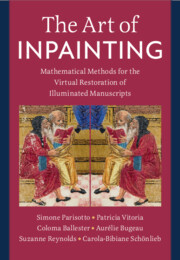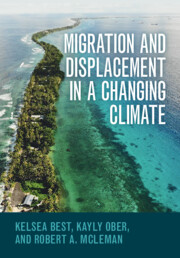Refine search
Actions for selected content:
274 results
Chapter 3 - Theories, Models, and Methods
-
- Book:
- Entanglements in World Politics
- Published online:
- 27 November 2025
- Print publication:
- 11 December 2025, pp 103-132
-
- Chapter
-
- You have access
- Open access
- HTML
- Export citation
Chapter 9 - Qualitative Research
- from Section 2 - Tools and Methodologies
-
-
- Book:
- Research Methods in Mental Health
- Published online:
- 31 October 2025
- Print publication:
- 20 November 2025, pp 135-155
-
- Chapter
- Export citation
16 - Shakespeare’s Language
- from Part II - Lighthouse Works and Authors
-
-
- Book:
- The New Cambridge History of the English Language
- Published online:
- 18 October 2025
- Print publication:
- 16 October 2025, pp 385-406
-
- Chapter
- Export citation
1 - Uncovering the World of Work
-
- Book:
- The Experience of Work in Early Modern England
- Published online:
- 19 September 2025
- Print publication:
- 09 October 2025, pp 25-57
-
- Chapter
-
- You have access
- Open access
- HTML
- Export citation
The use of strontium isotopes (87Sr/86Sr) to determine the geographic assignment based on keratin values of shed skins of green pythons (Morelia viridis) as an effective tool against wildlife crime
-
- Journal:
- Radiocarbon , First View
- Published online by Cambridge University Press:
- 07 October 2025, pp. 1-9
-
- Article
-
- You have access
- Open access
- HTML
- Export citation
1 - Introduction
-
- Book:
- Seniorland
- Published online:
- 04 September 2025
- Print publication:
- 18 September 2025, pp 1-8
-
- Chapter
-
- You have access
- HTML
- Export citation
Methods used in early value assessments for nice: a scoping review
-
- Journal:
- International Journal of Technology Assessment in Health Care / Volume 41 / Issue 1 / 2025
- Published online by Cambridge University Press:
- 08 September 2025, e64
-
- Article
-
- You have access
- Open access
- HTML
- Export citation
4 - Insights into Language Ideologies
- from Part I - Theoretical Background and Setting
-
- Book:
- Liquid Languages
- Published online:
- 28 July 2025
- Print publication:
- 14 August 2025, pp 54-72
-
- Chapter
- Export citation
Climate and Human Behavior Studies for Our Warming World: An Introduction to the Models, Methods, and Data
-
- Journal:
- Advances in Archaeological Practice / Volume 13 / Issue 2 / May 2025
- Published online by Cambridge University Press:
- 10 July 2025, pp. 205-222
-
- Article
-
- You have access
- Open access
- HTML
- Export citation
21 - Eye-Tracking as a Method for Legal Research
- from Part II - Introductions
-
-
- Book:
- The Cambridge Handbook of Experimental Jurisprudence
- Published online:
- 17 May 2025
- Print publication:
- 05 June 2025, pp 329-359
-
- Chapter
- Export citation
Introduction to the special issue on empirical methods and critical race theory
-
- Journal:
- Law & Society Review / Volume 59 / Issue 2 / June 2025
- Published online by Cambridge University Press:
- 11 June 2025, pp. 231-238
- Print publication:
- June 2025
-
- Article
-
- You have access
- Open access
- HTML
- Export citation

The Art of Inpainting
- Mathematical Methods for the Virtual Restoration of Illuminated Manuscripts
-
- Published online:
- 22 May 2025
- Print publication:
- 22 May 2025
11 - Torture and Other Ill-Treatment and the Death Penalty
-
- Book:
- The Prohibition of Torture and Ill-Treatment under International Law
- Published online:
- 17 April 2025
- Print publication:
- 24 April 2025, pp 266-277
-
- Chapter
- Export citation
1 - Thinking critically, problem-solving and setting priorities in epidemiology
- from Part 1 - Thinking like an epidemiologist
-
- Book:
- Introduction to Epidemiology for the Health Sciences
- Published online:
- 28 May 2025
- Print publication:
- 24 April 2025, pp 2-32
-
- Chapter
- Export citation
A first report of the detection of Avipoxvirus genomic sequences in louse flies (Diptera: Hippoboscidae)
-
- Journal:
- Parasitology / Volume 152 / Issue 5 / April 2025
- Published online by Cambridge University Press:
- 22 April 2025, pp. 522-530
-
- Article
-
- You have access
- Open access
- HTML
- Export citation

Migration and Displacement in a Changing Climate
-
- Published online:
- 10 April 2025
- Print publication:
- 17 April 2025
Chapter 8 - Empirical Research on College Faculty Thinking and Action in a Minority Serving Institution
-
- Book:
- Cultural Learning in Urban Schools and Minority Serving Institutions
- Published online:
- 20 March 2025
- Print publication:
- 03 April 2025, pp 94-104
-
- Chapter
- Export citation
Navigating change: a comparative analysis of health technology assessment reforms across agencies – processes, drivers, and interdependencies
- Part of
-
- Journal:
- International Journal of Technology Assessment in Health Care / Volume 41 / Issue 1 / 2025
- Published online by Cambridge University Press:
- 14 March 2025, e21
-
- Article
-
- You have access
- Open access
- HTML
- Export citation
Forum theatre as a tool to promote positive donkey welfare on Lamu Island, Kenya
-
- Journal:
- Animal Welfare / Volume 34 / 2025
- Published online by Cambridge University Press:
- 14 March 2025, e16
-
- Article
-
- You have access
- Open access
- HTML
- Export citation
Twenty thousand fishes under the seas: Insights into the collection and storage of trematodes from the examination of 20,000 fishes in the tropical Indo west-Pacific
- Part of
-
- Journal:
- Journal of Helminthology / Volume 99 / 2025
- Published online by Cambridge University Press:
- 07 March 2025, e45
-
- Article
-
- You have access
- Open access
- HTML
- Export citation
